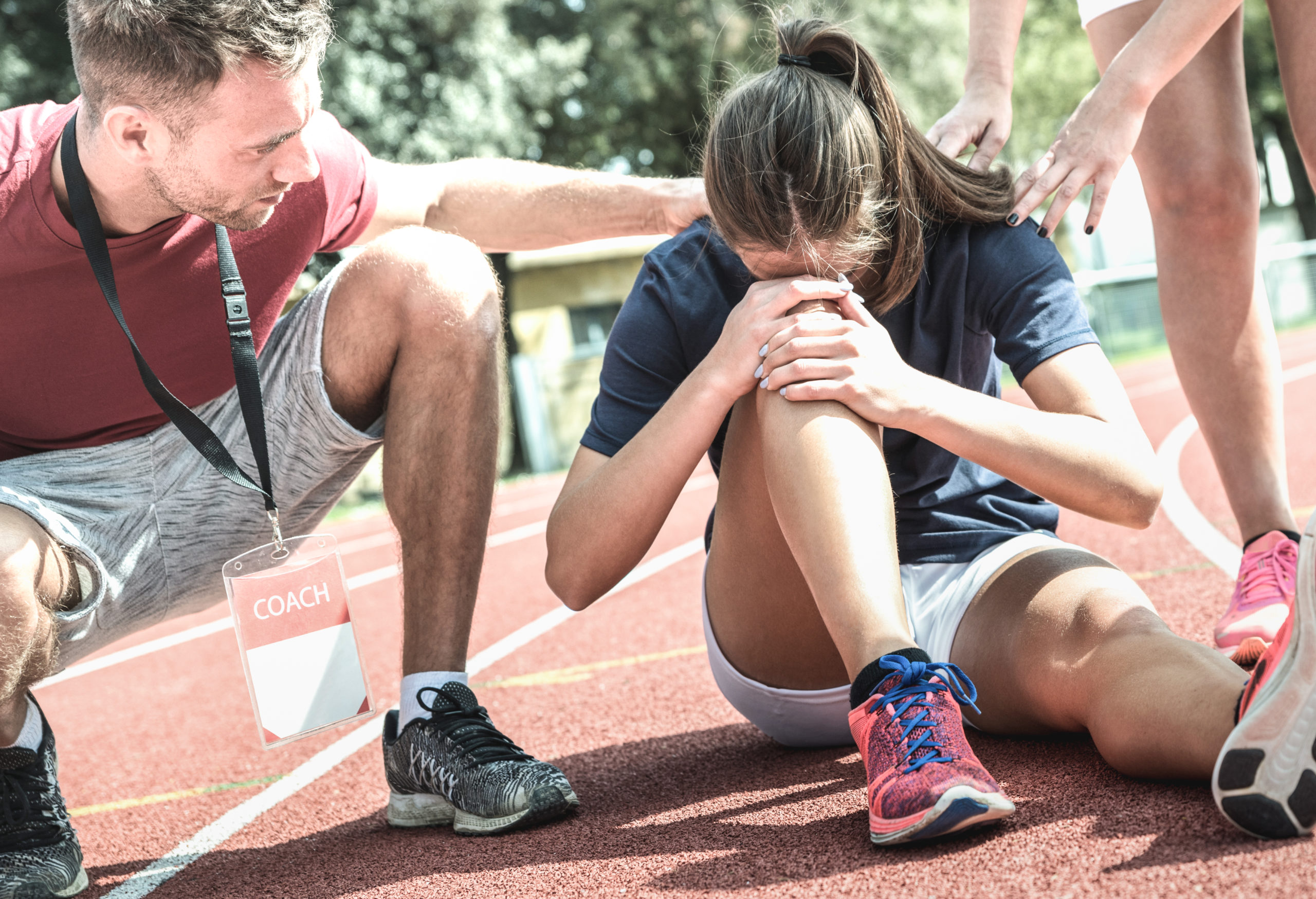
07 Nov Advice From The Experts: How To Treat The Injured Runner
We sat down with our running experts, Rachel Dillon, PT, DPT, Astym cert, and Scott Tilson, PT, DPT, Astym cert, to talk about their experience treating runners and the running community.
Tell me about your experience in treating runners.
Rachel: When I was in college, I ran cross country and track for 3 years then transitioned to marathons. In between having four children, I continued running marathons and eventually progressed to ultramarathons. I have also worked as a volunteer coach with high school track and cross-country programs. My passion for running has led me to specialize in this population, and I have found that runners appreciate my first-hand understanding of running injuries and training programs.
Scott: In addition to being a recreational runner, I previously owned a running shoe store and understand how finding the right shoe can be a daunting challenge.
What are some common running injuries that physical therapists treat?
Rachel: Typical diagnoses are: Achilles, posterior tibialis, and iliotibial band (ITB) tendinopathies as well as plantar fasciopathy, gluteus medius strain, sacroiliac joint (SIJ) dysfunction, and anterior knee pain.
Are there any differences in the types of injuries sustained by female vs. male runners?
Females seem to have more SIJ, hip, and low back issues than males. ITB pain is seen in both genders, but females suffering from ITB pain tend to have weaker hips both pre and post-partum. I see more Achilles issues in men, especially men who tend to be forefoot runners.
Scott: In addition to the above, I treat the continuum of bony stress reactions, which are typically found in the femoral neck, tibia, or bones of the foot. I also see a lot of low back pain and radicular symptoms due to dysfunctional lumbopelvic movement.
Let’s look at a runner’s equipment: shoes. Are there any typical problems with shoe selection?
Rachel: I have seen injury-free runners decide that they should change their shoe wear based on the latest thing that they have read. Unfortunately, this often leads to an injury. For example, when Chris McDougall’s book “Born to Run” came out, many people decided to try the minimalist shoes. It worked for some, and they were relieved of knee and ITB pain, but others began dealing with Achilles tendinopathies and/or plantar fasciitis. I caution runners against choosing a shoe based on trends or what a sponsored athlete may be wearing.
What sort of injuries have you seen when a runner transitions to minimal footwear?
The two main injuries I see with transitioning to minimal footwear are Achilles tendinopathy and plantar fasciitis. However, I have seen some runners successfully make the transition, which can help with knee and ITB pain.
Scott: I first consider the architecture of a patient’s foot and match the amount of support needed, if any. Unless there is a significant amount of pronation or supination, I would not get too particular with shoe prescription. Minimalist shoes may work for some, but it is very important that the runner slowly transitions to a minimalist shoe if that is their choice. Additionally, they must have adequate ankle mobility and calf muscle/tendon flexibility to successfully do so.
What exercises might my PT prescribe that are unique and specific to running?
Rachel: With my runners, I typically choose exercises done in single-leg stance. Some that have worked well for me are:
-
-
- Single-leg stance, running simulation, with opposite arm/leg swing, cueing abdominals, focusing on relaxed arm swing, not rotating trunk, neutral knee alignment, and upright posture.
- Single leg stance, controlled hip movement of the leg not on the ground.
- Tandem stance arm swing drills, focusing on controlling core and front to back movement of arms.
- Dynamic warm-up of knee hugs, focusing on form; lateral lunges; inch worms
-
How has Astym treatment impacted your running clients?
Scott: Astym therapy has had a significant, positive impact on the runners I treat. Astym treatment provides a unique stimulus that decreases pain, increases flexibility, promotes recovery, and enhances power; it also increases the effectiveness of the exercises I prescribe. My patients who receive Astym therapy can run at a higher mileage, as compared to those treated with therapeutic exercises alone.
Also, I have observed that many runners can recover from a race more quickly if Astym therapy is performed following the competition.
Do you have any tips regarding injury prevention for runners?
Scott: Injury prevention in the running population is always a hot topic. In my opinion, I feel the most important tip is to manage your running volume and training appropriately. A few guidelines are the following:
-
-
-
- Avoid increasing your long run more than 25% from the previous run.
- Vary your training speed during your runs throughout the week. This will challenge the muscles differently with each run and prepare your body for a variety of terrain and circumstances.
- Perform cross-training and strengthening of the lateral hip muscles: Yoga, Pilates, and HIIT workouts are good options for maintaining flexibility and abdominal strength.
- Make sure you give yourself at least one day of complete rest, which can include cross-training activities.
-
-
Remember that running is a very repetitive exercise; to stay healthy, a variety of fitness outlets may be needed. Just as a desk worker needs activity to prevent injury, a runner needs to do something different to put the stress on other parts of their body.
What should injured runners do if their therapist does not understand the specific needs of a runner?
Scott: One of the great things about being an Astym Certified clinician is that you have a means of connecting with other therapists who specialize in a certain sport. If an athlete comes into my office, and I am unfamiliar with the specific aspects of their activity, I can consult with other clinicians who are able to share their “insider” tips.
Why Astym?
Astym therapy helps patients get better faster with a safe and effective approach to treating pain. On average, an Astym treatment session is around 15-30 minutes depending on the injury or condition and most conditions resolve after 4-5 weeks of treatment and therapy.
Astym Certified therapists treat the cause, not just the symptoms of your pain. Astym therapy can resolve tough injuries and conditions, even when other treatments have failed.
Common Running Injuries That Can Be Resolved With Astym Therapy
- resolves 91.2% of Plantar Fasciitis cases
- resolves 95.3% of Achilles Tendinopathy cases
- resolves 97.6% of Hamstring Strains cases
- resolves 92.6% of IT Band Syndrome cases
- resolves 96.3% of Shin Splints cases
AstymSTRONG® for Runners
Astym Certified therapists can become experts in treating the needs of runners through the AstymSTRONG® Advanced Application for Runners. This online course contains instructional videos, checklists, diagrams, and expert commentary to help certified therapists offer expert treatment to runners’ particular needs. Other Advanced Applications of Astym therapy are also offered online for Astym Certified providers.
Not certified? Register today to become certified in Astym therapy. After the course, you’ll gain full access to all Advanced Astym Application courses which provide specialty education for particular patients and conditions as well as receive access to professionally designed marketing materials, clinical manuals, review materials, and extensive, full-time clinical support (including case consultation and education on particular healthcare conditions).
Interested in Astym therapy? Contact an Astym Certified provider near you to see how Astym therapy can get you back in the race and running your best mile.
Meet Our Running Experts:
Rachel Dillon, PT, DPT, Astym cert, works at Peak Sports and Spine in Snoqualmie, WA. She earned her undergraduate degree in Chemistry/Pre-Medicine from Taylor University in Indiana and her DPT from Northwestern University.

Scott Tilson, PT, DPT, Astym cert, earned his undergraduate degree in Sports Sciences from the University of the Pacific and his DPT from Duke University in 2004. He currently works at a multidisciplinary sports medicine center in Sacramento, where he treats post-surgical patients as well as recreational, high school, collegiate, and professional athletes.
*This content is for informational purposes only, and not intended to be a substitute for professional medical advice, diagnosis, or treatment.




